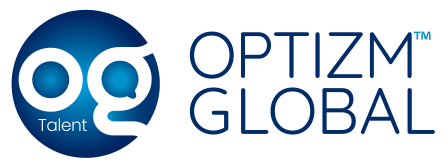In today’s business world, recruitment is crucial in attracting top talent for firms. However, traditional recruitment methods can be time-consuming and require significant resources. Fortunately, technological advancements have revolutionized how firms approach hiring, providing innovative alternatives to expedite the process.
Employing technology can help businesses enhance productivity, reduce expenses, and ultimately attract the best individuals to join their workforce. The field of recruiting technology has seen significant developments that are revolutionizing the employment process. These innovative tools provide remarkable efficiency and efficacy in attracting, analyzing, and integrating top talent. The era of traditional recruitment methods is over, and businesses must embrace cutting-edge technologies to stay ahead.
In today’s blog, we’ll explore how technology can expedite your recruitment process, providing innovative ways to attract top talent quickly and effectively.
Applicant Tracking System (ATS)
The creation of Applicant Tracking Systems (ATS) is one of the most significant advancements in recruiting technology. These systems simplify recruiting, from advertising job positions to handling applications and communicating with recruiters and applicants. ATS systems enable recruiters to organize, manage, and filter applications, resulting in considerable time savings on administrative activities.
Steps:
- To use an ATS, compare platforms and choose one that fits your needs.
- Work with IT or the supplier to set up the system.
- Train recruiters and hiring managers in the ATS interface and how to post jobs, assess applicants, communicate with them, and follow the recruitment process.
Additionally, ATS platforms frequently include tools such as resume parsing, which automatically pulls essential information from resumes, making it more straightforward to discover suitable applicants.
AI-powered screening tools:
AI-powered screening tools have transformed the recruitment process. With the help of algorithms, these systems quickly evaluate resumes, cover letters, and online profiles to identify top candidates based on predetermined criteria.
Steps:
- Configure tool parameters and keywords to match job requirements.
- Test and optimize tool accuracy with sample resumes.
- Continuously improve the tool based on feedback and performance indicators.
This saves recruiters a considerable amount of time and effort. Additionally, these systems can learn from previous recruitment decisions, improving accuracy and giving recruiters more informed judgments.
Video interviewing platforms
Video interviewing platforms offer a practical and efficient option for recruiters who want to conduct virtual job interviews from anywhere in the world. This is particularly useful for firms with geographically distributed teams or applicants. These platforms provide a range of features, including live interviews, pre-recorded interviews, and video assessment tools.
Steps:
- To use video interviews in your recruitment process, select a platform with a user-friendly interface, live or pre-recorded options, reasonable costs, and reliable customer support.
- Train your recruiters to organize interviews, invite candidates, conduct interviews, and analyze responses.
- Ensure candidates have a smooth experience by providing clear instructions and technical assistance.
Such tools allow recruiters to assess candidates’ communication skills, professionalism, and cultural fit without needing in-person meetings, saving time and resources.
Collaborative hiring tools
Collaborative hiring tools facilitate recruitment involving multiple stakeholders, such as hiring managers, team members, and HR specialists. These technologies allow stakeholders to communicate and collaborate more effectively throughout the hiring process. They assist in soliciting input, evaluating candidates, and monitoring each stage of the hiring process in real time.
Steps:
- Select and configure a collaborative hiring tool that aligns with your organization’s size, structure, and workflow requirements.
- Involve stakeholders early in the process and encourage discussion.
- Gather feedback from stakeholders on the usability and effectiveness of the collaborative hiring tool.
These tools foster cooperation and ensure that all team members share the same recruiting criteria and objectives, resulting in better decision-making and selection of qualified applicants.
Data Analytics: Recruitment Insights
Data analytics has become an invaluable tool for optimizing the recruitment process. Recruitment analytics solutions gather and analyze data at different stages of the recruiting process, providing valuable insights into recruitment patterns, candidate behavior, and the effectiveness of recruitment techniques.
Steps:
- Collect data from various sources such as ATS, job boards, career websites, and social media platforms during recruitment.
- Analyze and visualize data using data analytics tools to identify patterns and trends.
- Convert data insights into practical recommendations to improve the recruitment process, such as reducing the time-to-hire, increasing the applicant quality, or optimizing recruiting channels.
Using data analytics, recruiters can identify bottlenecks, analyze the ROI of recruiting channels, and continuously make informed decisions to improve their hiring outcomes.
Mobile Recruitment Solution
Nowadays, job seekers prefer access to job openings via mobile devices. Mobile recruiting solutions provide the opportunity to search and apply for jobs using smartphones or tablets, making the application process more convenient and accessible.
Steps:
- Choose a mobile recruiting solution with a responsive design for a consistent user experience across devices.
- Optimize your career website and job listings for mobile devices to simplify the application process.
- Test the solution on various devices and platforms and gather feedback for incremental improvements.
These platforms are designed with adaptable interfaces, easy-to-use features, and mobile-optimized job ads to ensure that candidates can effortlessly participate in the recruitment process while on the go.
In Conclusion
Technology has transformed recruiting, providing creative ways for efficiently attracting top personnel. Using technologies mentioned in this blog, businesses can streamline the recruiting process at every stage. This can help companies improve productivity, reduce time-to-hire, and build high-performing teams that drive success in the digital era. Organizations can attract top talent in today’s competitive employment market by adopting these methods.





